New information about Armata BREM T-16
A few years ago, the first information appeared about the promising unified heavy tracked platform Armata, on the basis of which it was proposed to build the main Tanks, infantry fighting vehicles and other equipment, including auxiliary purposes. In particular, the Uralvagonzavod Corporation was to create a new ARV, which it was proposed to use for the maintenance of promising tanks.
Until recently, there was no exact information about the BREM project based on the Armata platform. Just a few days ago, the situation radically changed. TV channel "Star" showed a new edition of the program "Military Acceptance", dedicated to the platform "Armata" and armored vehicles at its base. The program "Armata - Terra Incognita" showed the main tank T-14, the heavy infantry fighting vehicle T-15 and the armored repair and recovery vehicle T-16. It is noteworthy that before the Zvezda channel program, the general public has never seen a new BREM.
It is no secret that combat vehicles are of the greatest interest to specialists and technology enthusiasts, while auxiliary systems rarely receive much attention. This is probably one of the reasons why the T-16 BREM did not figure in the news and was mentioned only in the context of the general possibilities and prospects of the "Armata" project. Thus, the promising tank and BMP received all the public attention, and the recovery vehicle remained in the shadows.
Because of all this, until recently, the available information about the T-16 project was fragmentary. Moreover, the very name of the T-16 has become known recently. The prospective BREM was not given enough attention, and the basic information about it was to some extent a consequence of analyzing the news about the entire program. As a result, almost all the information about the T-16 machine was the result of reflection on the published data.
After the announcement of information about the possibility of building BREM on the basis of the unified platform "Armata", the first assessments of the appearance of such equipment appeared. It was assumed that the new machine will be built on the same chassis as the prospective tank, and also receive a number of special equipment: a crane, a winch for towing damaged equipment, etc. At the same time, the details of the project were not officially disclosed.
Unfortunately, the authors of the program “Military Acceptance” did not focus on the promising BREM T-16, limiting themselves only to a short story about its capabilities and moving on to another vehicle of the family. Nevertheless, very interesting facts about the available characteristics were announced, and the machine itself was shown. Despite the short story of the presenter and specialists, the video sequence of the TV program allows you to carefully consider the new BREM and draw some conclusions.
The armored repair and recovery vehicle T-16 is another representative of the family of vehicles based on the Armat’s unified tracked platform, which affects its main features. New BREM built on the basis of a unified chassis, also used as the basis for the tank and heavy infantry fighting vehicles. In this case, the machine receives a modified body and a set of special equipment, allowing the crew to perform various operations on the maintenance of damaged equipment.
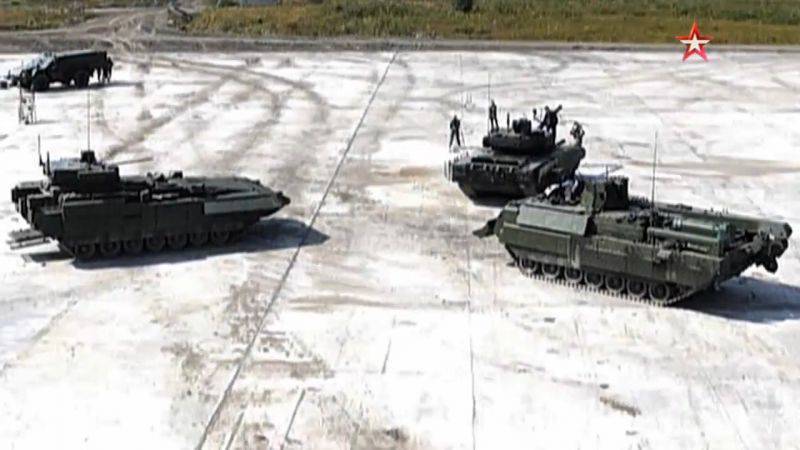
"Heroes" of the TV program "Military Acceptance": BMP T-15 (left), tank T-14 (right behind) and BREM T-16 (right ahead)
As a base for the T-16, a variant of the Armata platform is used with a rear location of the engine compartment. This is primarily due to the applied layout and placement of special equipment. The front part of the body of the car is given under a manned compartment with crew jobs and seats for the carriage of the crew of the evacuated tank. According to some information, the crew has three crew seats and three seats for tankers.
The crew's armored cabin is located in the front of the hull and has an asymmetrical design, made with a shift to the left side. This arrangement of the cabin due to the need to install special equipment. Behind the habitable compartment is located aft engine compartment with a power unit.
A characteristic feature of the Armata platform, which distinguishes it from the previous national armored vehicles, is the use of an integral power unit. Previously, the engines and transmissions, made in the form of separate units, were used on tanks and other equipment. In the project of a new unified platform, the connection of the engine and gearbox into a single unit is implied. This design of the power plant provides greater ease of assembly equipment at the factory and maintenance in the army. In particular, the time required to replace damaged units is significantly reduced.
Like other cars of the family, the BREM T-16 is equipped with an X-shaped multi-fuel engine with an output over 1500 hp. The exact value of the maximum power of this engine is still classified, but it is noted that it is more powerful than all other propulsion systems used in domestic tanks. With the engine interlocked reversing automatic transmission, having eight gears forward and reverse. The latter feature is expected to increase the mobility of prospective armored vehicles.
The new BREM has a chassis unified with other equipment. In its composition there are seven road wheels with individual torsion bar suspension on each side. Apparently, part of the rollers is also equipped with additional shock absorbers that improve the characteristics of the machine. As in the case of the T-14, the undercarriage design is designed for an uneven load on the rollers. For this reason, the gaps between the first three pairs of track rollers are slightly larger than the rest.
According to reports, the crew of the T-16 BREM consists of three people: the driver, the commander and the operator of special systems. They are located in the front of the hull and must fall into place through the hatches in the roof. Next to the hatches, viewing instruments are provided for operation in a combat situation. The composition of the equipment crew jobs is still unknown. It can be assumed that the driver’s control post is unified with other devices of the family. In this case, the machine is controlled by a handwheel, gear lever and two pedals. There is also reason to believe that some special systems can be controlled using built-in and remote control panels.
The main task of the armored repair vehicle is to enter the battlefield and evacuate damaged armored vehicles, which places special demands on the level of protection. In order to ensure the highest possible survivability, the new T-16 has received a set of powerful reservations and additional systems, from dynamic protection to special electronics.
The program "Military Acceptance" mentions that the T-16 BREM is equipped with a special radio-electronic system that allows repelling attacks using guided weapons. In addition, this system is capable of neutralizing anti-tank mines with electromagnetic fuses. Probably, we are talking about the electronic warfare system, unified with the equipment of the T-14 tank and BMP T-15.
Protection of the crew and internal units in case of contact with an enemy projectile or missile is provided with its own armor and a set of additional equipment. So, the frontal part of the body is covered with blocks of dynamic protection and lattice screens. Due to certain features of the layout of the special equipment, only the cabin of the crew is equipped with dynamic protection. The right side of the forehead, in turn, is covered with a lattice. The left side of the habitable compartment is completely covered with dynamic protection. On the right-hand side screen there are several more of these blocks, on which the grid screen is installed.
The middle and aft part of the sides is equipped with a set of anti-cumulative grids. Such equipment allows you to protect the car from anti-tank weapons, but it does not interfere with the cooling of the engine compartment. The aft projection is protected only by its own body armor and reinforced parts of special equipment.
If necessary, the BREM T-16 can respond to the enemy with machine-gun fire. For this, a remote-controlled module with a large-caliber machine gun is installed on the roof of the cabin of the crew. With the help of this weapons the crew of the vehicle can be protected from infantry or enemy light vehicles.
To perform the main tasks, such as evacuating damaged armored vehicles from the battlefield and performing some repair work, the BREM T-16 received a set of special equipment. A hydraulically driven dozer blade is installed on the lower front hull plate. It can be used for some earthworks and also serves as an outrigger when working with the main crane. In addition, the blade provides additional protection for frontal projection.
The most noticeable element of the special equipment is the main crane. In front of the hull, to the right of the cabin of the crew, there is a small rotary platform of the crane, on which an arrow is hinged. In view of its use at the leading edge, the boom is made of armored steel. The boom is equipped with a hydraulic cylinder for lifting. In addition, in its middle part a winch is provided with a cable used to lift loads. In order to win power, the crane is equipped with a chain hoist with a hook attached to the movable block. In the stowed position, the boom is placed along the body of the machine, the crane hook is fixed on the stern sheet. At the same time, the arrow on the right is covered with lattice screens and in fact is an additional protection of the cabin from firing from the side.
For lifting and moving loads, the boom rises to the working position and pivots forward with the help of a movable base. In this case, the upper element of the frontal lattice screen leans forward and down, without interfering with the movements of the boom. The maximum capacity of the main crane has not yet been clarified. During the filming of the TV program, BREM lifted a cargo weighing about 2 tons. According to the representative of the Ural Transport Engineering Bureau, Ilya Onegov, the T-16 machine can lift even heavier loads, including the power unit or tank turret.
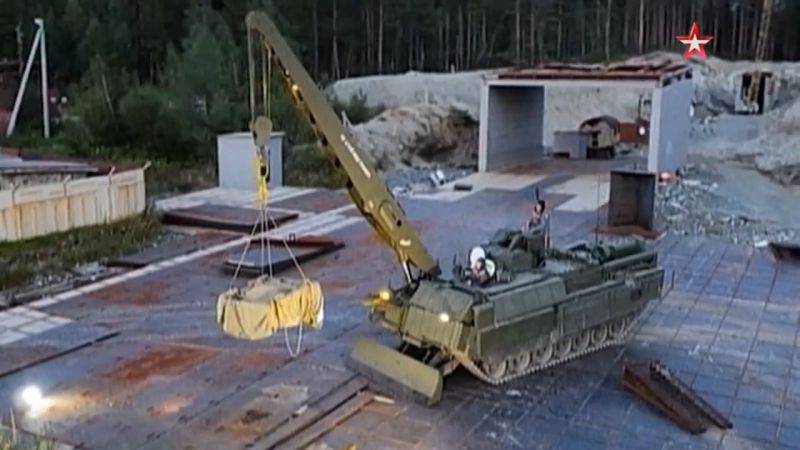
Lifting cargo from a different angle. Behind the combat module is an operator with a remote control panel
The main crane is designed to perform various works on lifting and moving heavy loads, for example, to replace a power unit of a vehicle or repair combat modules.
Not in all situations it is advisable to use the main valve, since its characteristics may be redundant. To solve such problems, the T-16 carries an additional manipulator, mounted in the rear part of the hull, on the left side. This device with a lower carrying capacity can be used for repairs or for moving relatively light loads.
Well-known specialist in the field of armored vehicles Alexey Khlopotov not so long ago told in his blog curious historyassociated with an additional crane. This device was absent in the initial technical assignment of the military department, but the authors of the project decided to add it on their own initiative. The military did not approve such an initiative and demanded that the second crane be removed. Engineers, in turn, ignored this requirement and as a result, the current T-16 machines carry two cranes with different characteristics.
The most important innovation of the project, relating to efficiency in real conditions, is a special towing device. The Ural Transport Engineering Bureau has developed and patented a mechanized coupling device for towing damaged tanks. Such a coupling performs all the necessary operations using its own drives according to commands from the remote control and does not require direct human assistance. Due to this, the crew of the BREM in preparation for towing should not leave the limits of the armored hull and risk their lives. Such a towing device is used for the first time in domestic practice.
The crew of the repair and recovery vehicle may perform some repair work. For this, T-16 equipment includes welding equipment, tools, etc. equipment. Thus, the new BREM can not only take out damaged equipment from the battlefield, but, with minor damage, can repair it independently and without the participation of full-fledged army workshops.
In the near future, the promising T-16 BREM should pass the whole complex of tests and enter mass production. For effective operation of all equipment on the basis of a unified platform "Armata" troops need auxiliary machines, including repair and evacuation. In accordance with existing plans, up to 2020, the army should receive 2300 armored vehicles based on the Armata platform. The exact number of tanks, BMP or BREM included in this number has not yet been announced. Nevertheless, it is already possible to say with sufficient confidence that army repairmen will have to master new equipment built on the basis of a promising unified platform in the foreseeable future.
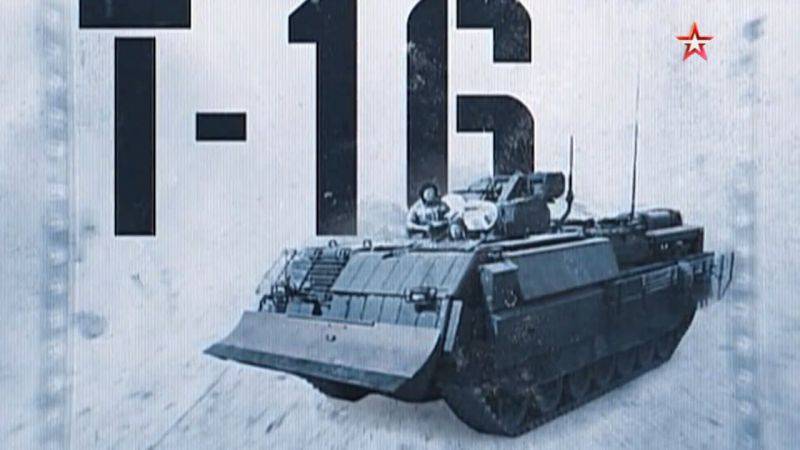
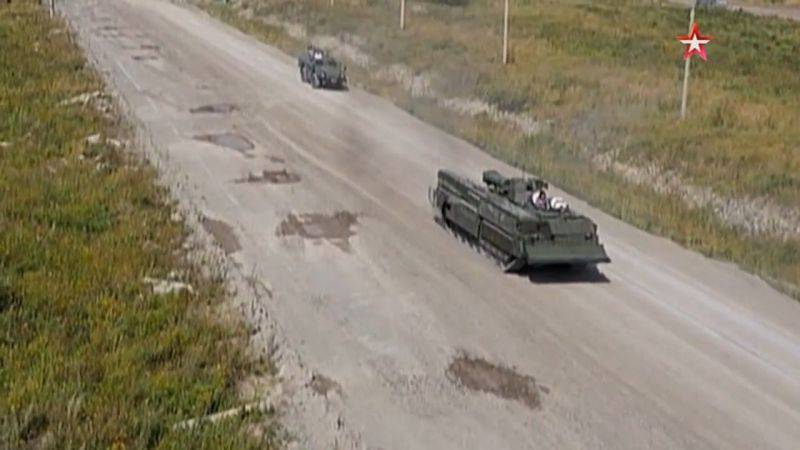
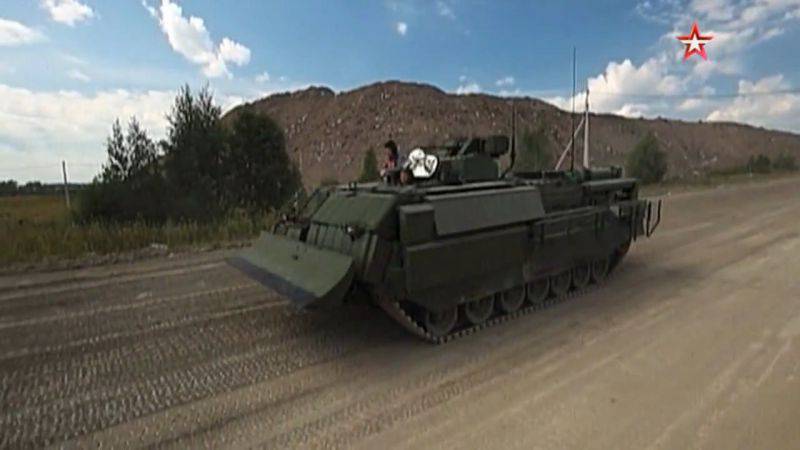
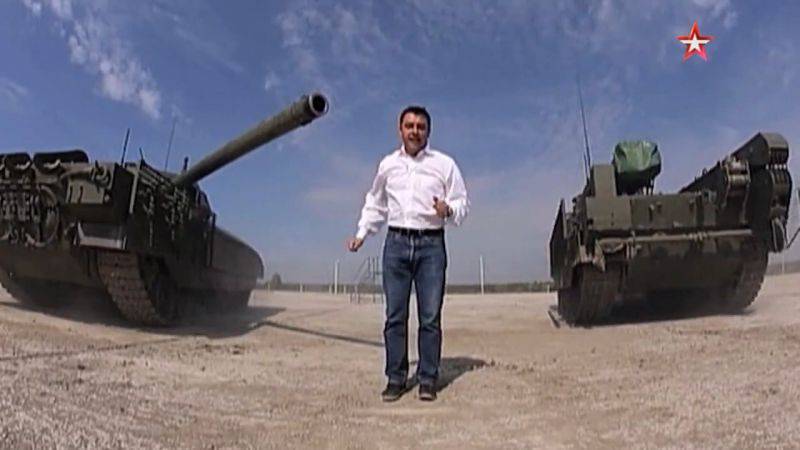
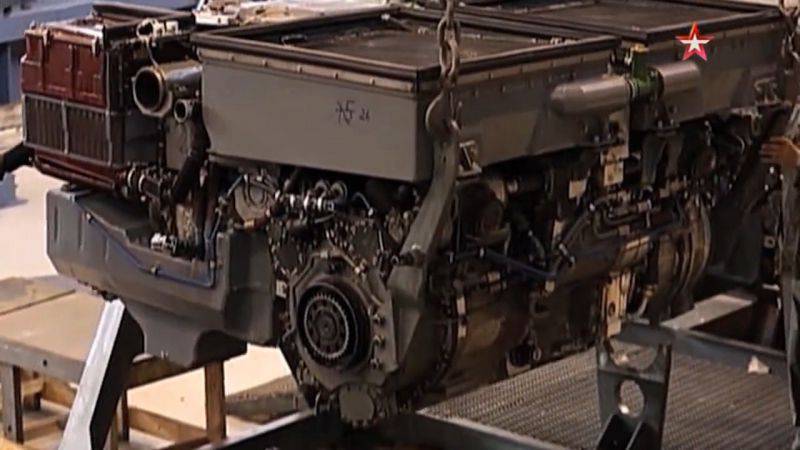
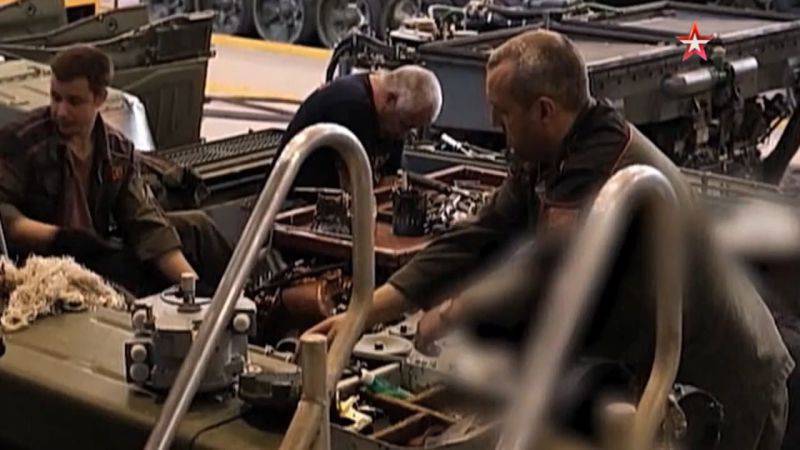
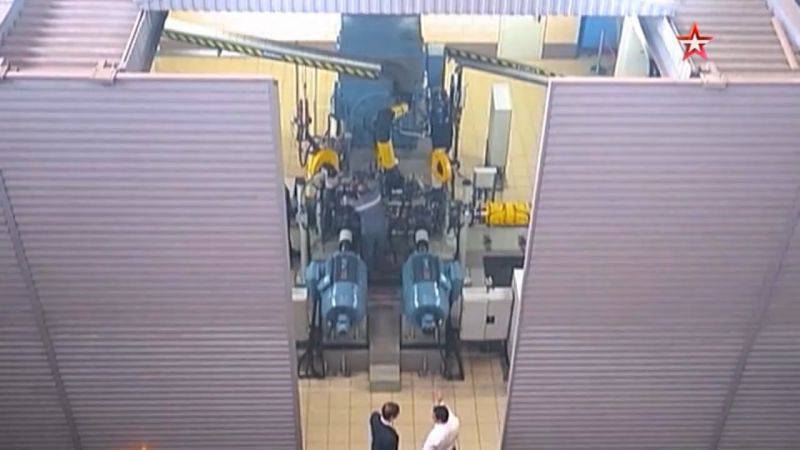
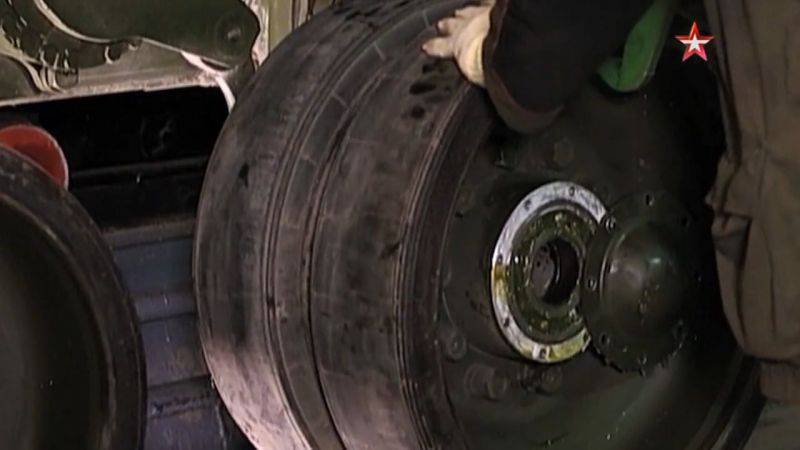
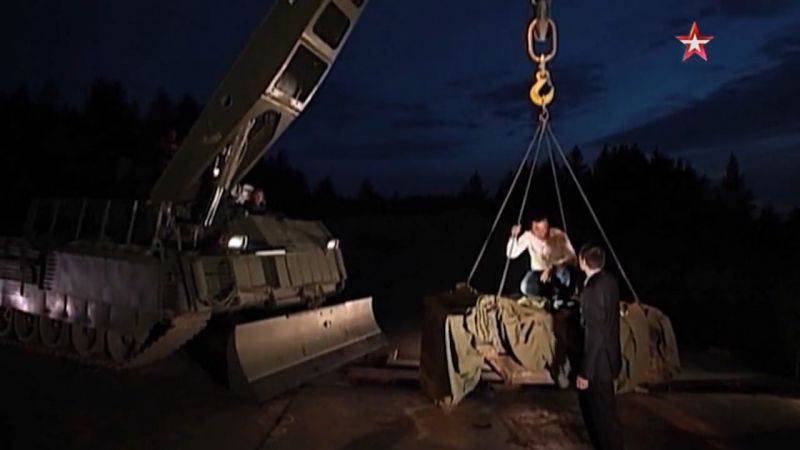
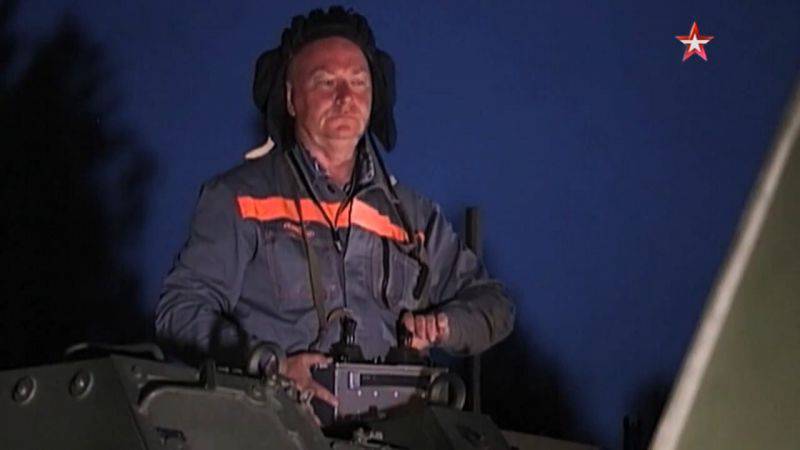
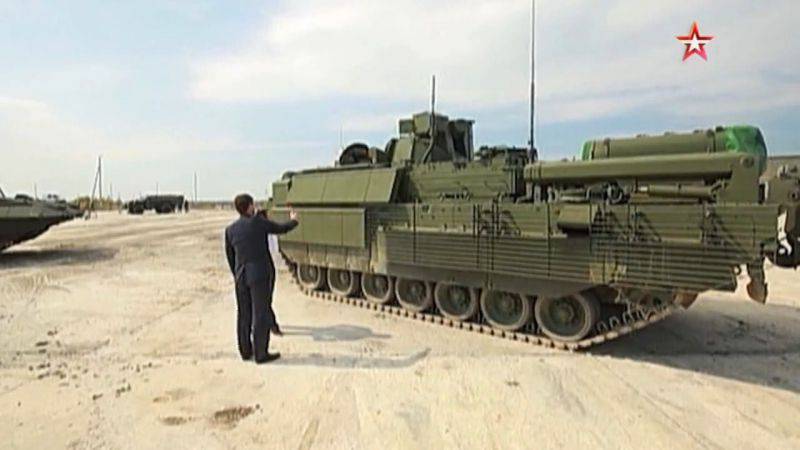
Information